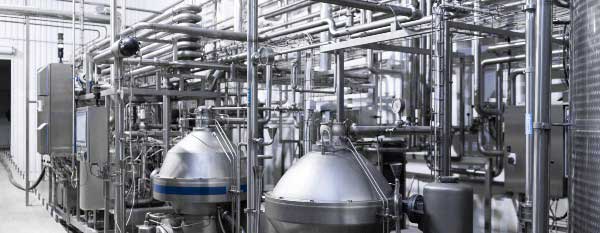Robotics are helping move the chemical industry into a safer and more productive space. Here’s a look at how robotics is helping plants.

Robotics are helping move the chemical industry into a safer and more productive space. While many feared that robots would take away the need for human employees, chemical plants are finding that robots are giving employees the opportunities to do their jobs more thoughtfully and without fear of injury.
Humans are often given tasks that are well below their abilities. Take the idea of patrolling a parking lot. This task is mundane for people who have to force themselves to stay awake to look at license plates and watch camera footage. Many chemical plants are turning to robots for their dull security tasks. Robots don’t get bored, and they don’t need breaks. They also are unbiased as they tirelessly move through parking lots.
Robots can also be used to monitor security inside of plants. When various sensors are installed, they can detect changes in air quality faster than humans can. They can also detect air quality changes as they patrol parking lots and building exteriors. They can also map the locations where their sensors pick up air-quality changes. Security robots do have upfront costs, but they quickly make up for the price by removing the need to pay hourly wages and benefits.
Robots can also be used to automate packing and shipping. As products move through production, the final stages involve packing, labeling, and shipping. These are assembly-line processes that do not require much thought, so robots can be programmed to do these tasks.
Robots move faster and with more efficiency than humans when it comes to mundane tasks like packing and shipping, and they do not need to stop to take breaks or go home for the day. Robots require less space than humans, so plants that use automated packaging can maximize their square footage by using it for tasks that help the bottom line.
Robots are helping the chemical industry by doing jobs that humans cannot do. Robots can safely go to new heights and enter confined spaces.
Conducting Aerial Safety Inspections
In fact, chemical plants are using robots in ways that no one imagined regarding safety inspections. Chemical plants are relying on drones to inspect places that are too high to send people. Using their robotic cameras and sensors, drones can do aerial inspections of stacks even as the plant is functioning. Prior to this, these stacks could only be inspected by human employees, but after the plants were shut down and the stacks cooled.
Cleaning Toxic Chemical Tanks
Robots can also be used to clean chemical tanks. Before using robots, plants had to be shut down, and the tanks prepared for humans to enter them. Tank cleaning was one of the most dangerous jobs a chemical-plant worker could do. With upcoming OSHA confined-spaces regulations tightening, robot tank cleaning could not have come at a better time.
Before robots did the job, employees had to wear full-body PPE to enter tanks filled with hazardous chemicals and gases that could destroy the PPE. After short cleaning sessions, the employees had to exit the confined spaces and go through thorough decontamination while still in their PPE.
The chemical tanks still have confined entry spaces, and they still have toxic gases and chemicals, but tank-cleaning robots are not affected by all of it. The robots are controlled by remote outside of the tanks. The robots can run all day and all night, which speeds up the processes and lets the plants reopen quickly. Robots use heavy sprayers to remove residue from the walls and floors in a fraction of the time that humans needed to do the same job. By using robots to clean the toxic tanks, chemical plants stay within the OSHA safety guidelines. As an added benefit, humans do not lose jobs because the robots still need operators.
Handling Dangerous Materials
Robots are also used to work in the harsh conditions near material refining furnaces. These excessively hot and hazardous areas create constant safety issues for humans who had to move materials using heavy tools. Robots can do this work with precision and without the worry of harming their health.
Using Thermal Imaging Cameras
Now that robots can be outfitted with cameras and sensors of all sizes and abilities, they can be used to inspect areas that could be harmful to employees. Chemical plants are filled with pipes, tanks, and other equipment that could suffer from dangerous breaches. Robots with thermal imaging cameras and adjustable sensors can continuously inspect sensitive areas of chemical plants and alert employees of any impending danger.
Robots are changing the way business is done at chemical plants. They are doing the mundane and dangerous jobs with efficiency. They are helping keep employees safe from the multitude of dangers in and around the plants.

Chris Meaux
Chris Meaux, As the Director of Technical Sales, I am entrusted with sufficient autonomy to generate, maximize, and sustain the performance of this fast-growing Industrial Robotic Business segment. I provide leadership to other managers and team members, guiding the development of business strategy and collaborate on the execution of corporate goals. As well, I am responsible for Ecorobotics sales growth, sales operations, profit margin, operation processes, and client relationship building through a high-energy hunter sales role.
In this episode, I sat down with Beejan Giga, Director | Partner and Caleb Emerson, Senior Results Manager at Carpedia International. We discussed the insights behind their recent Industry Today article, “Thinking Three Moves Ahead” and together we explored how manufacturers can plan more strategically, align with their suppliers, and build the operational discipline needed to support intentional, sustainable growth. It was a conversation packed with practical perspectives on navigating a fast-changing industry landscape.